After making this checkerboard cake, I knew I wanted to make a chocolate version. It’s a lot of fun to put together and with just a few simple things to keep in mind, the assembly is a…piece of cake. But if I’m being honest the real star here is the frosting. With cocoa AND melted chocolate, it tastes like fudge and is thick, creamy and rich. I almost forgot about the cake when I tasted it, it’s that good!
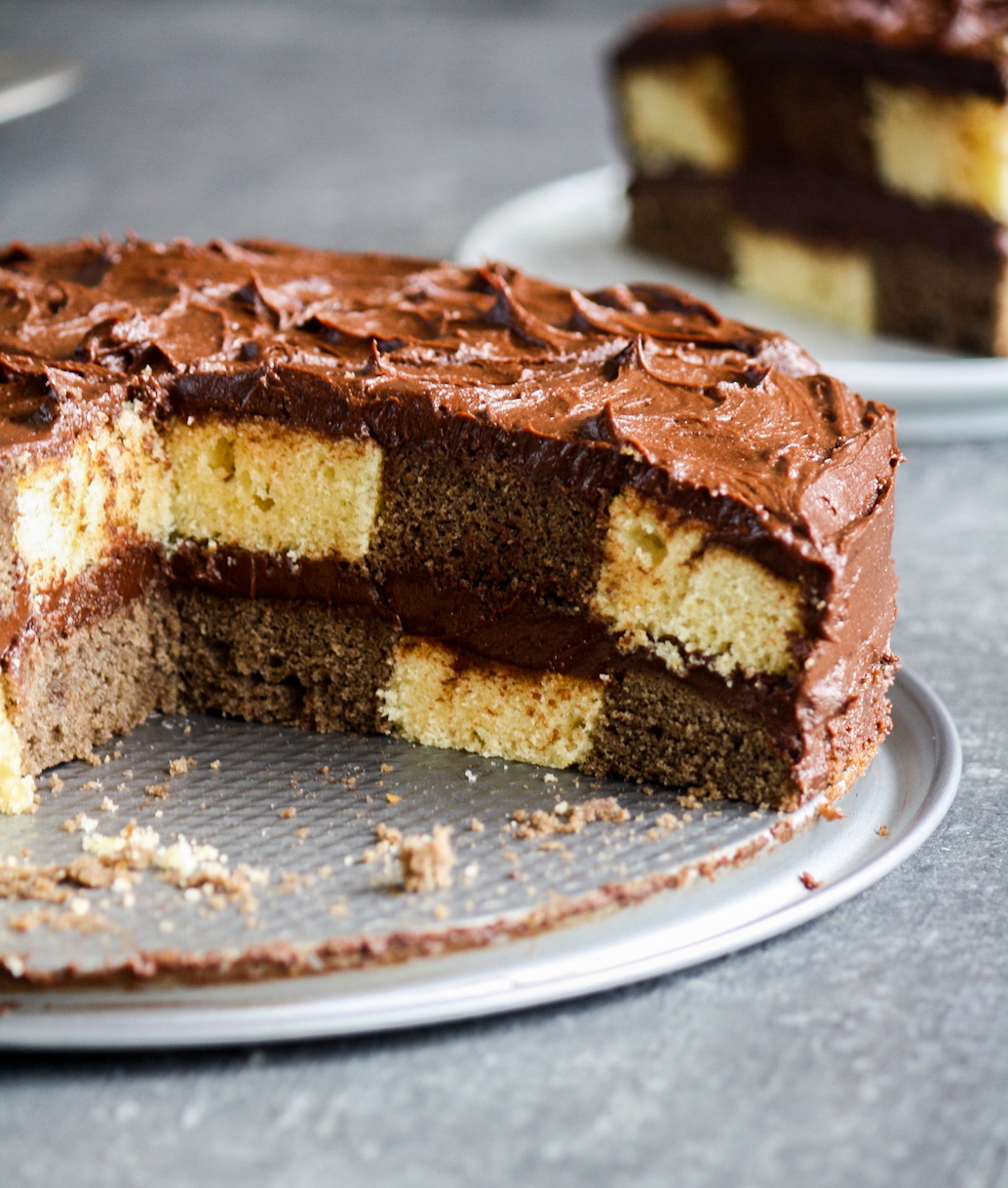 For the cake batter, I made a double batch of this marble cake. It has a little more butter and bakes up soft, but sturdy which is great when you’re fiddling around with circles of cake that fit into each other like a jigsaw. The batter is very similar to my favourite basic butter cake which you’ll find here, here, here and here but I like the slightly extra butter and less baking powder in this recipe. The result is not dense, don’t worry.
For the cake batter, I made a double batch of this marble cake. It has a little more butter and bakes up soft, but sturdy which is great when you’re fiddling around with circles of cake that fit into each other like a jigsaw. The batter is very similar to my favourite basic butter cake which you’ll find here, here, here and here but I like the slightly extra butter and less baking powder in this recipe. The result is not dense, don’t worry.
The chocolate portion of the cake isn’t super chocolatey but that’s where the frosting comes in. This cake is tied together by the frosting so whatever you do, don’t skip it! It’s thick enough that it spreads easily but holds its shape for neat slices and if it’s cool where you live, this frosting is also ok at room temperature for a couple of days (more below on chilling the cake during assembly).
Before assembly, the cake layers should be chilled for a bit to make them easier to handle. But in a butter cake like this one, chilling firms up the cake quite a bit and so before you eat, make sure it’s back at room temperature for the softest, bestest texture. Every buttery bite goes so well with that rich, dark chocolate frosting that it’s best to have people to share with!
Please read the recipe notes before beginning.
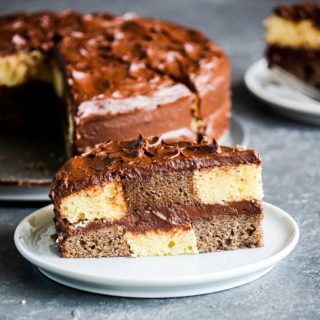
Chocolate Vanilla Checkerboard Cake with Fudge Frosting
Ingredients
For the chocolate batter
- 125 gms butter, at room temperature
- 1/2 cup caster sugar (95 gms)
- 2 eggs, at room temperature
- 1/2 tsp vanilla extract
- 2 tbsps milk
- 1 cup all-purpose flour
- 1/2 tsp baking powder
- 2 tbsps cocoa powder
- Pinch of salt if using unsalted butter
For the vanilla batter
- 125 gms butter, at room temperature
- 1/2 cup caster sugar (95 gms)
- 2 eggs, at room temperature
- 1/2 tsp vanilla extract
- 2 tbsps milk
- 1 cup all-purpose flour
- 1/2 tsp baking powder
- Pinch of salt if using unsalted butter
For the frosting
- 1/2 cup cold whipping cream (125 ml) (regular cream is ok but the frosting will be thinner)
- 100 gms unsalted butter, at room temperature
- 1/2 tsp vanilla extract
- 50 gms dark chocolate, melted and cooled
- 2 cups icing sugar
- 2/3 cup cocoa
- 3 to 4 tbsps milk
Instructions
- Make one cake batter at a time (see notes if your oven can fit two tins together). I prefer to bake the cakes on day one then assemble and frost on day two. Cut out a large piece of non-stick baking paper and place it over the base of a 9 inch springform tin. Fasten and lightly grease the sides of the pan. If you're using a regular round tin, you will need to line the sides with paper as well, so that you can lift the cake out easily. If you don't want to use paper, grease the tin well, and be prepared to invert the cake after it's cooled.
- Make the chocolate cake. Preheat the oven to 175 C. Beat the butter and sugar in a mixing bowl with a hand mixer on medium speed till pale and fluffy. Add in the eggs, one at a time, beating slowly after each addition. Stir in the vanilla and milk.
- Now sift in the flour, baking powder, cocoa and salt, if using. Fold gently to combine.
- Spoon the batter into the prepared cake tin and smoothen the top. Bake for 20 to 25 minutes, rotating the tin halfway through to ensure even browning. A toothpick poked in the center should come out clean. (Wipe or rinse your bowl, spoons, beaters to keep them ready for the second batter.)
- Let the cake cool at room temperature for about 20 minutes, then use the paper to lift it and place on a wire rack to cool completely.
- Make the vanilla cake. Repeat the same steps as above including lining the cake tin and the only difference is you won't add cocoa powder. Bake the same way as well.
- Once both cakes have cooled to room temperature (you can leave them out overnight, covered), place both in the fridge for 1 hour. This chill time helps firm them up and makes the next few steps much easier.
- Now cut your cakes. While these cakes rise quite flat, if you do see any uneven bits, use a sharp knife to level the surface of both cakes. Uneven bumps lead to a less tight checkerboard pattern which could make it difficult to slice the cake.
- Once you're done levelling, work with one cake at a time still placed on the paper it was baked on. Place a 6 inch plate right in the center and use a sharp knife to cut all along the rim of the plate. Lift the plate off, and run your knife around the incision again making sure it's cut all the way through. Next, place a 3 inch bowl in the center of this 6 inch circle and cut it in the same way. Use your fingers to gently push the center circle out from below, followed by the middle circle. You will now have three circles of cake. If you find it difficult to separate the circles, place the cake back in the fridge for 15 minutes, then separate them. If you have cookie cutters in these sizes, use them for more precise circles.
- Repeat this cutting process with the second cake.
- Now assemble the cake (see notes). Place one 9 inch chocolate circle on one of the baking papers, then place a 6 inch vanilla circle inside it, followed by another chocolate 3 inch chocolate circle in the center. Wiggle the circles with your fingers to make sure they fit tightly together. This is your first layer.
- Now place a 9 inch vanilla circle on another pieces of paper, a 6 inch chocolate circle inside it, then a 3 inch vanilla circle in the center. This is your second layer. Place both layers in the fridge for 30 minutes. I didn't do this the first time around and found that it made a big difference in creating more well-fitted and cohesive layers.
- When ready to assemble, make the frosting. Add the cream, butter and vanilla to a mixing bowl and beat on medium speed with a hand mixer till smooth. Slowly beat in the melted chocolate. Then sift in the icing sugar and cocoa. Beat again on low speed to combine and gradually add the milk till the frosting takes on a thick but spreadable consistency. When you lift the beaters you will see small peaks formed by the cream.
- Now place one of your assembled cake layers on a platter or cake stand. Spread about two thirds of the frosting all over the surface, then place the second layer on it, pressing down gently. Spread the remaining frosting on the top and sides of the cake, using a metal spatula to help neaten up the sides. Drag a small spoon around the top to create a swirly design.
- While normally I would chill the cake to give the frosting a chance to set, this frosting is thick and sets well without refrigeration. Let the cake sit at room temperature for about 1 hour now before you slice it so that the cake itself softens (butter cakes harden when chilled).
- The cake can be stored at room temperature in cooler weather, for 2 to 3 days. If it's warm and humid where you are, place it in the fridge on day one where it will keep for a week and in the freezer for about a month, always bringing it fully to room temperature before eating. Happy baking!
Notes
Shop this recipe!
This post contains affiliate links.
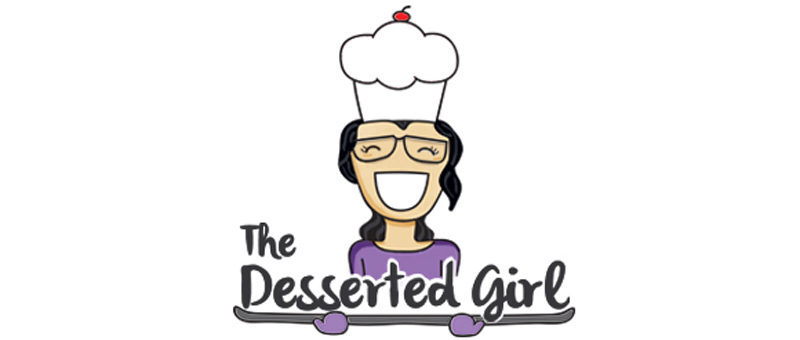





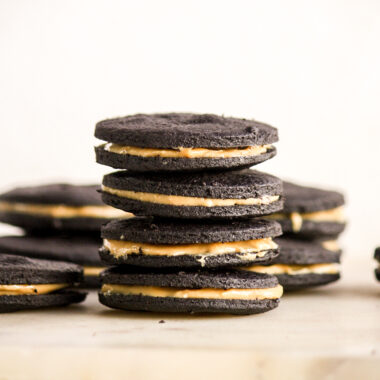
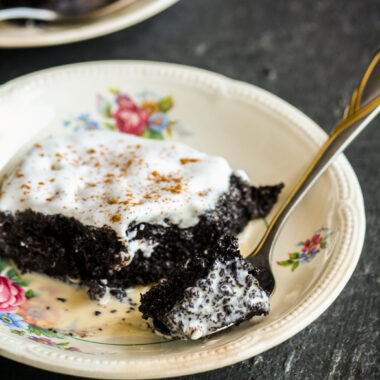
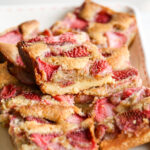
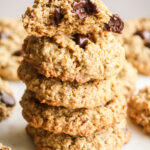

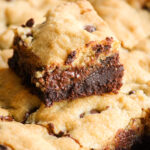
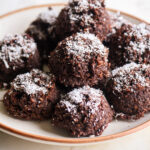
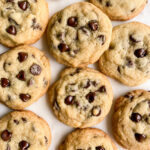
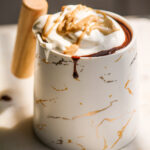
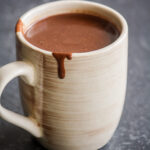
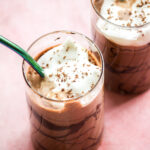
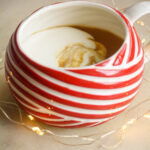

Pingback: Wallflower Weekly Finds, 303 - Cooking with a Wallflower